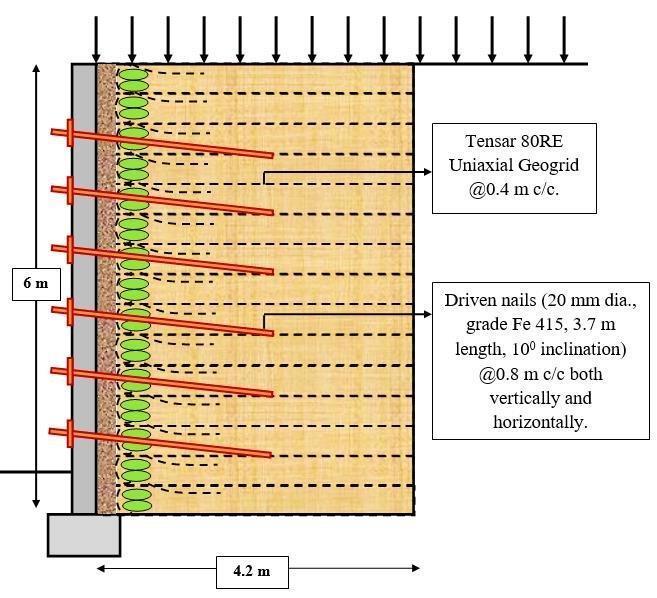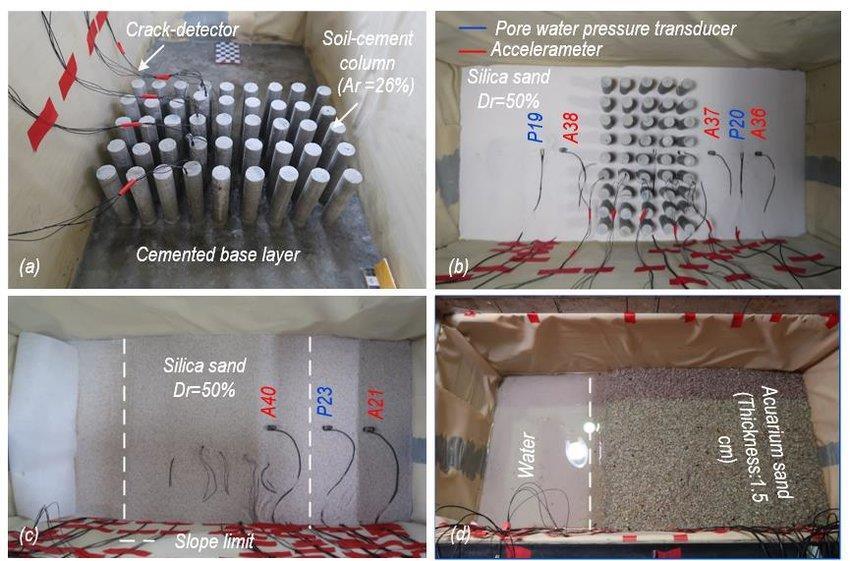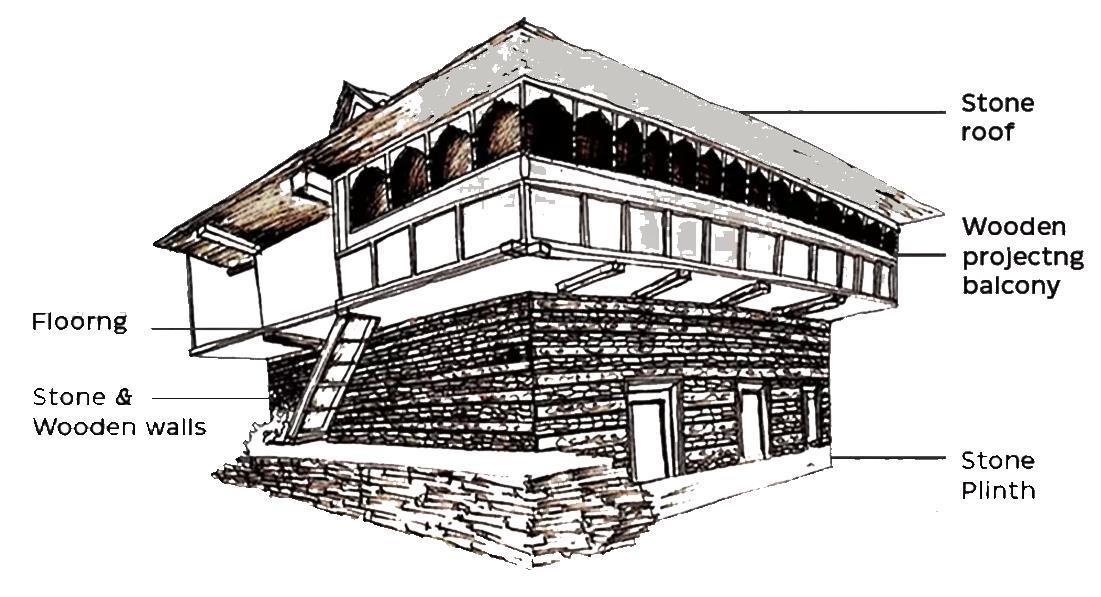HOUSES IN DISASTER PRONE AREA (DISASTER RESILIENT) A CASE OF UTTARAKHAND
Rajat Rastogi1, Sramana Banerjee2
1Barch Student, 4th year, AIT -SAP, Greater Noida rajat.rastogi777@gmail.com
2Associate Professor, AIT -SAP, Greater Noida, Sramana.banerjee@learn.apeejay.edu,India
1.0 Abstract
The research aims to understand disaster resilient houses methods and materials for areas, in Chamoli, Uttarakhand, India that are prone to disasters (Cloud-burst, Flood & Landslide). The paper examines strategies, materials and guidelines to enhance resilience in these regions. It includes an analysis of existing literature. Presents relevant case studies. Together these elements offer insights into techniques and materials that can strengthen buildings and structures, against the related disasters.
This study aims to enhance the disaster resilience of residential structures in the region by analyzing the unique geological and climatic conditions, reviewing historical data on past disasters, and identifying key strategies for enhancing disaster resilience in residential houses. Key strategies include using local materials, traditional architectural techniques, and modern engineering solutions, with a focus on disaster-resistant design principles, slope stabilization methods, and flood-proofing techniques. Field surveys and interviews with local communities, builders, and experts provide insights into the current state of housing resilience in Uttarakhand, revealing a blend of traditional knowledge and modern practices. The research proposes a model for disaster-resilient houses tailored to the socio-economic and environmental conditions of Uttarakhand, incorporating sustainable building practices, costeffective materials, and adaptable design principles. The study concludes fostering a culture of resilience and leveraging both traditional and contemporary building practices, Uttarakhand can significantly reduce its housing infrastructure's vulnerability to natural disasters.
KEYWORDS:
Disaster Resilience, Uttarakhand, Cloud-burst, Flood, Landslide, Sustainable Houses, Structural Reinforcement, Community Involvement.
2.0 Introduction
Natural disasters pose a significant threat to human settlements, particularly in regions with vulnerable infrastructure. In mountainous areas like Chamoli, located in the northern Indian state of Uttarakhand, the risks are exacerbated by the challenging terrain and climatic conditions. Chamoli is prone to landslides, earthquakes, and floods, which have repeatedly demonstrated their devastating impact on housing and livelihoods. The district's geographical setting, combined with socio-economic factors, creates a complex landscape for disaster management and resilience building.
Chamoli's experience with natural disasters, including the 1999 earthquake and the 2021 glacier burst flood, highlights the urgent need for research focused on housing vulnerability and resilience. These events not only cause immediate damage but also have long-term socioeconomic repercussions for the affected communities. The reliance on agriculture and tourism further compounds the district's vulnerability, making it imperative to develop robust disaster preparedness and response strategies.
This study aims to:
Assess the current state of housing in Chamoli in terms of vulnerability to natural disasters.
Identify the socio-economic factors that influence the resilience of houses and households.
Evaluate the effectiveness of existing disaster preparedness measures and policies.
Propose recommendations for improving the disaster resilience of housing in Chamoli.
The paper is structured to first review the existing literature on housing resilience in disasterprone areas, followed by a detailed description of the research methods. The results section presents the findings of the study, which are then discussed in relation to the broader context and specific challenges faced by Chamoli. The conclusion summarizes the key insights and offers recommendations for future research and policy development.
By focusing on Chamoli, this research not only addresses a critical need for understanding housing vulnerability in a specific high-risk area but also aims to contribute to the global discourse on disaster resilience and sustainable development in vulnerable regions.
3.3 Reasons for choosing this area.
Chamoli is situated in the Himalayan region, characterized by its rugged terrain and high-altitude areas.This geographymakes it particularlysusceptible to natural disasters such as landslides, earthquakes, and flash floods.
The district is crisscrossed by several rivers, including the Alaknanda River, which contributes to frequent flooding events, especially during the monsoon season.
Studying Chamoli can provide valuable insights for disaster management authorities and policymakers at both the state and national levels. The findings can inform strategies for improving resilience in similar mountainous and disaster-prone regions.
The communities in Chamoli have developed various adaptive strategies to cope with recurringnaturaldisasters.Understandingtheselocalresiliencepracticescancontribute to broader knowledge on community-based disaster risk reduction.

3.4 Data Collection
3.4.1
Primary Survey (Questionnaire)
Thequestionnairewas donebytheauthor,focusing onthetopic"Houses in disasterproneareas in Chamoli, Uttarakhand, India." The total number of responses gathered amounted to 52 Through this questionnaire, insights were gathered regarding the level of awareness among individuals regarding disaster (cloud bursts, flash floods & landslides) -resilient architecture in hilly areas and their understanding of its practical application. The analysis of these responses provides valuable data pertaining to the percentage of individuals who possess knowledge about the topic, comprehend its usage, and can effectively integrate it into relevant contexts.
Q1. Are you aware of disaster resilient houses in architecture?
Q2. Do the disaster resilient houses perform better in the duration of the disaster?
Q3. Should there be separate building norms for the houses in disaster prone areas?
Q4. Do you think resilient engineered construction should be permitted in disaster prone areas?
Q5. Do plants have a significant role in enhancing the resilience of structure in case of flash floods and landslides?
Q6. Houses should be constructed with disaster-resilient materials and techniques in disaster prone areas?
Q7. Government should provide shelters or safe houses in your vicinity?
3.4.2
Secondary Data
Previous studies and reports on disaster resilience, housing vulnerability, and disaster management in mountainous regions were reviewed to inform the study framework and contextualize findings.
3.5 Categorization of Literature
Table 1: Categorization of Literature Review (Research papers, Books, E-Books)
S. No Literature Category NameofLiterature Publish Data /URL Pages of Description outcome
1 Research paper D.H. Shugar at el., Science 10.1126, A massive rock and ice avalanche caused the 2021 disaster at Chamoli, Indian Himalaya
2 Research paper Varghese,Bindi et al, Disaster Management: A Case StudyofUttarakhand
accesse d on (date)
Intere st
2021 2-7 A deadly cascade A catastrophic landslide in Uttarakhand state in India on February 2021
2013 5-14
3 Research Blog Kbuttarakhand.blogspo t.com,Introductionof UttarakhandCulture
The paper discusses Uttarakhandin the plight of this disaster throughacase study and recommends severalstepsto be taken for disaster management. Disaster resilience techniques & manageme nt using a casestudy
2014 6-7 The research paper discusses the Uttarakhand Houses and thereStructure on bases of their local culture, topography & materials. Local constructio n techniques & materials.
4 Compiled By: Dr. Satendra, 2014 18-39 Disaster involvingflash
Indian Disaster Report
Dr.K.J.Anandha
Kumar, Maj.Gen.Dr.V.K.
Naik,
Kc,
Avsm, National Institute of Disaster Management flood and landslides struck many parts of Uttarakhand state.
3.6 Case Studies
Table 2: Categorization of Case Studies
S.No Case Study
Location Type
Building Challenge
1 Flood-Resilient Floating Community Houses Majuli, Fresh water Island, Assam Disaster prone Residential Houses. Design, mitigation & construction techniques
2 Flash Flood and its Mitigation Almora, Uttarakhand, India Disaster prone Residential Houses. Design, mitigation & construction techniques
3 Development of Disaster Resilient Affordable House Design for Different Regions of Bangladesh Bangladesh,Asia Disaster prone Residential Houses. Design, mitigation & construction techniques
4 Demonstration
Housing Construction for Landslide and Flood ProneAreas Ratnapura, Sri Lanka Disaster prone Residential Houses. Design, mitigation & construction techniques
3.7 Sampling Techniques
A stratified random sampling method was used to ensure representation from different types of households (e.g., by construction type, economic status) within each selected village. Households were randomly selected within each stratum to reduce selection bias.
3.7.1
Quantitative Analysis
Basic statistical analysis was performed to summarize the data, using measures such as mean, median, and standard deviation.
Multivariate regression analysis was conducted to identify factors associated with housing vulnerability and the effectiveness of disaster preparedness measures.
Geographic Information System (GIS) analysis was performed to map disaster-prone areas and overlay them with houses data. This helped in visualizing the spatial distribution of vulnerable houses and identifying high-risk zones.
3.8 Limitations –
Building height, Balancing traditional architectural styles, which are often culturally significant, with modern disaster-resilient techniques can be challenging, Lack of awareness or resources for maintenance, especially in remote areas, can undermine the sustainability of resilient housing initiatives.
The accuracy of self-reported data, particularly regarding disaster preparedness and past experiences, is a potential limitation. Recall bias may affect the reliability of this information.
Findings from Chamoli may not be generalizable to other regions with different geographic and socio-economic contexts.
Focus on Chamoli, Uttarakhand, India disaster-prone areas, which may restrict the findings applicability to other geographical locations with different disaster characteristics and difficulties
This Methods section provides a comprehensive overview of how the study on houses in disaster-prone areas in Chamoli was conducted, ensuring clarity and replicability.
4.0 Results
Thecasestudyresearch and literaturereviewfocus on understandingtheapplicabilityofdesign techniques and materials to deal with varied situations. Enhancing disaster resilience of buildings is the main research claim being examined, with the ultimate objective of ensuring that structures can successfully protect people during disaster and recover from such events.
In order to obtain insight into the project's applicability and underlying principles, the researcher'sliteraturereviewincludestheevaluationofawiderangeofcasestudies.Toprovide a deeper knowledge and analysis, comparisons between various case studies are made. These comparisons are founded on predetermined criteria intended to increase structural stability and achieve disaster resilience houses. The most efficient methods and strategies may be found through the above research, giving significant guidance for upcoming disasters (cloudbursts, flash floods & landslides)-prone conditions.
4.1 Strength & Limitations of the Collected Data
The information was gathered through reviewing a number of case studies, which helped to understand the disaster-resistant techniques. These buildings are particularly designed to withstand the damaging effects of disaster and to recover from such events.
4.1.1
Strength
The data has been collected to justify the research questions & the data has been collected from various sources like research papers, articles, books & magazines.
The case studies helped in understanding various concepts about the disaster resilient techniques
It will help to understand the various limitations that has been faced by the structure while the disaster has occurred
4.2 Questionnaire Analysis

5.0 Discussion
5.1 Brief
In the rapidly evolving world, environmental harm caused by unintentional and intentional human activities that leads to cause disaster. To protect buildings and the well-being of individuals, disaster-resilient techniques and materials must be implemented, the disasters like cloudbursts, floods & landslides can be caused by various factors.
5.1.1 Cloudbursts
Intense Rainfall: A rapid and concentrated downpour in a specific area can lead to cloudbursts.
Weather Patterns: Unstable atmospheric conditions and interactions between different air masses can trigger cloudbursts.
Mountainous Terrain: Steepandruggedterrains, likethosein Uttarakhand, canenhance the likelihood of cloudbursts as moist air is forced to rise quickly.
5.1.2 Floods
Heavy Rainfall: Prolonged and intense rainfall can cause rivers and streams to overflow.
Snowmelt: Rapid melting of snow in mountainous regions can lead to increased water flow in rivers.
Glacial LakeOutburst Floods (GLOFs):Thesuddenreleaseofwaterfroma glaciallake due to ice dam failure or other triggers.
Deforestation: Removal of trees reduces the land's ability to absorb water, increasing runoff.
Urbanization: Construction and impermeable surfaces prevent water infiltration, leading to higher runoff and flooding.
Dam Failure: Structural failure of dams can lead to sudden and severe flooding downstream.
5.1.3 Landslides
Soil Composition: Loose, unconsolidated soils are more prone to landslides.
Rock Structure: Certain types of rock are more susceptible to weathering and erosion.
Heavy Rainfall: Saturation of soil reduces its stability, leading to landslides.
Seepage: Water infiltration into the soil can reduce friction between particles, causing slides.
Deforestation: Removal of vegetation destabilizes slopes and reduces root support.
Construction Activities: Road building, mining, and other activities can weaken slopes.
Poor Land Management: Inadequate planning and land use practices can exacerbate landslide risks.
Earthquakes: Seismic activity can trigger landslides by shaking and destabilizing the ground.
5.2 Research Inference and Its Significance
5.2.1 Flood Resilient Houses
The public should be educated about the importance of avoiding construction in flood-prone areas. Building well-designed structures with flood-resilient materials and techniques can help reduce building in these areas. Methods include raising buildings above flood levels with plinths or stilts, using buoyant foundation systems, and using guidance posts for vertical
5.2.2 Landslide Resilient Houses
5.2.2.1
Resilient Design Interventions
The findings of the research demonstrate that specific design interventions, such as Seismic bands, masonry enhancements, roofing innovations, and openings reinforcement, contribute significantly to the resilience of buildings in landslide-prone areas. These Interventions enhance structural stability and mitigate the impact of seismic forces and Landslides.
5.2.2.2
Architectural Styles for Resilience
The adoption of architectural styles like Dhajji Diwari in the Ravi Valley and Kath-Khuni in the Sutlej Valley showcases how traditional construction techniques can be leveraged to create disaster-resistant structures. These styles incorporate wood-and-stone construction, wooden planks, and corrugated Sheets to enhance structural stability.
Landslide resilient materials, which can withstand disaster conditions, are the same as those used in normal conditions are:
(a) Geogrid Reinforced Soil (GRS) Wall: - GRS walls are resilient to landslides because they can help to improve the shear strength of the soil, reduce the pore water Pressure in the soil, increase the soil's resistance to erosion, and provide a flexible and durable retaining wall system.

Figure 8: Detailed design of Geosynthetic Reinforced Soil (GRS) Wall with Rigid Facia Using Nailing
(b) Soil Nailing: - Soil nailing is a technique that is used to reinforce soil slopes and embankments. It involves drilling holes into the slope and then inserting steel nails into the
holes. The nails are then grouted into the soil, which helps to strengthen the slope and prevent it from sliding. Soil nailing is a particularly effective technique for stabilizing slopes in landslide areas.

(c) Gabion Walls: - Gabion walls are atype of retainingwall that is madeof wiremesh baskets that are filled with stones or rocks. Gabion walls are flexible and can withstand a lot of movement, making them ideal for landslide areas. They are also relatively easy to construct and maintain.
(d) Rock Anchors: - Rock anchors are another type of soil reinforcement system that is used to stabilizeslopes in landslideareas. Rockanchors aredrilledintothe bedrockand then grouted into place. They are then connected to a concrete or steel face that helps to hold the slope in place
Figure 10 Components of a ground anchor

(e) Soil-Cement Columns: - Soil-cement columns are a type of ground improvement technique that is used to strengthen soil. It involves drilling holes into the ground and then
filling them with a mixture of cement and soil. The cement and soil are then mixed together to form a strong and durable column. Soil-cement columns are particularly effective in landslide areas because they can help to improve the strength and stability of the soil.

Figure 11: Soil-cement column construction procedure (a) soil-cement column and crack detectors attached to the cement base (b) soil-cement columns after construction and soil pluviation (c and d) soil foundation before and after saturation

Comparison to Normal Construction Materials
Concrete: Regular concrete might be sufficient in non-disaster-prone areas, but in landslide-prone regions, reinforced or high-performance concrete is preferred for its enhanced properties.
6.0 References
1. Gupta, 2014 reviews Uttarakhand Disaster 2013 - Scientific Figure on Research Gate. Available from: https://www.researchgate.net/figure/Map-ofUttarakhand_fig1_309805091 [accessed 17 Jun, 2024]
2. D.H. Shugar at el., Science (2021, June 12). A massive rock and ice avalanche caused the 2021 disaster at Chamoli, Indian Himalaya. https://www.researchgate.net/publication/352305890_A_massive_rock_and_ice_aval anche_caused_the_2021_disaster_at_Chamoli_Indian_Himalaya
3. Water, 2022, Kansal ML, Singh S. Flood Management Issues in Hilly Regions of Uttarakhand (India) under Changing Climatic Conditions. https://doi.org/10.3390/w14121879
4. Varghese, Bindi, (2013, September 11). Disaster Management: A Case Study of Uttarakhand.
https://www.researchgate.net/publication/265209421_Disaster_Management_A_Case _Study_of_Uttarakhand
5. Kbuttarakhand (2018, August 25). Uttarakhand Houses and there Structure https://kbuttarakhand.blogspot.com/2018/08/uttarakhand-houses-and-therestructure.html#google_vignette
6. Kbuttarakhand (2018, August 27). Introduction of Uttarakhand Culture. https://kbuttarakhand.blogspot.com/2018/08/introduction-of-uttarakhand-culture.html
7. Khanduri, J Geogr Nat Disast (2018, August 08) India Disaster Report 2013 Landslide Distribution and Damages during 2013 Deluge: A Case Study of Chamoli District, Uttarakhand. https://www.longdom.org/open-access-pdfs/landslidedistribution-and-damages-during-2013-deluge-a-case-study-of-chamoli-districtuttarakhand-2167-0587-1000226.pdf
8. Subramani, S & Rehman, S (2021-2022). Flood-Resilient Floating Community Housing
https://cdri.world/upload/fellowship/1781441223502351_202311020845floodresilient%20floating%20community%20housing.pdf
9. Pankaj and Anand, J Environ Hazard (2018). Flash Flood and its Mitigation: A Case Study of Almora, Uttarakhand, India https://www.hilarispublisher.com/openaccess/flash-flood-and-its-mitigation-a-case-study-of-almora-uttarakhand-india.pdf
10. Islam, Mohammad & Hossain, Tahsin. (2017). Development of Disaster Resilient Affordable House Design for Different Regions of Bangladesh. https://www.researchgate.net/publication/317688493_Development_of_Disaster_Resi lient_Affordable_House_Design_for_Different_Regions_of_Bangladesh
11. Hewawasam, Lionel (2005, May 26) Demonstration Housing Construction for Landslide and Flood Prone Areas a case study from Ratnapura, Sri Lanka https://www.adpc.net/igo/category/ID211/doc/2013-dIYk0O-ADPCSafer_Cities_12.pdf
12. Kumar, Vinit & Mehta, Manish. (2023). Detailed Report-Study of Causes & Impacts of the Uttarakhand Disaster on 7th Feb 2021.
https://www.researchgate.net/publication/370059259_Detailed_ReportStudy_of_Causes_Impacts_of_the_Uttarakhand_Disaster_on_7th_Feb_2021
13. Champaneri, Parth. (2018) Disaster resilient houses.
https://issuu.com/parthchampaneri/docs/thesis_report -_2018
14. Sati, Vishwambhar. (2013). Extreme Weather Related Disasters: A Case Study of Two Flashfloods Hit Areas of Badrinath and Kedarnath Valleys, Uttarakhand Himalaya, India.
https://www.researchgate.net/publication/259240597_Extreme_Weather_Related_Dis asters_A_Case_Study_of_Two_Flashfloods_Hit_Areas_of_Badrinath_and_Kedarnath _Valleys_Uttarakhand_Himalaya_India
15. Gautam, Dipendra & Prajapati, Jyoti & Paterno, Kuh & Bhetwal, Krishna & Neupane, Pramod. (2016). Disaster resilient vernacular housing technology in Nepal. https://www.researchgate.net/publication/295252380_Disaster_resilient_vernacular_h ousing_technology_in_Nepal
16. Tangheroni, Elisa (2022). Flood Resilient Shelter Case Studies and Reports https://www.humanitarianlibrary.org/collection/flood-resilient-shelter-case-studiesand-reports
17. Koli, Dakshata (2022). Disaster Resilient Housing at Sundarban, West Bengal https://www.scribd.com/document/577934108/Disaster-Resilient-Housing-atSundarban-West-Bengal-By-Dakshata-Koli
7.0 Table of Figures
FIGURE 1: MAP OF UTTARAKHAND (GUPTA,2014) ....................................................................3
FIGURE 2: MAP OF UTTARAKHAND SHOWING DISTRICT, REGIONS, AND LOCATIONS OF CLOUDBURSTS.(WATER, 2022)...........................................................................................4
FIGURE 3: SURVEY ABOUT THE HOUSES IN DISASTER PRONE AREAS IN CHAMOLI,
UTTARAKHAND, INDIA PROPOSED BY AUTHOR 8
FIGURE 4: DIFFERENT MATERIALS CAN BE USED IN FLOOD PRONE AREAS (SOURCE
RETROFITTING URBAN FLOOD RESILIENCE: AN INVESTIGATION AND EVALUATION OF
CURRENT STRATEGIES).......................................................................................................8
FIGURE 5: DIFFERENT MATERIALS CAN BE USED IN FLOOD PRONE AREAS (SOURCE:
RETROFITTING URBAN FLOOD RESILIENCE: AN INVESTIGATION AND EVALUATION OF
CURRENT STRATEGIES).......................................................................................................8 F
FIGURE 6: FLOATING FOUNDATION WITH DRUMS.......................................................................8
FIGURE 8: DETAILED DESIGN OF GEOSYNTHETIC REINFORCED SOIL (GRS)WALL WITH RIGID FACIA USING NAILING.........................................................................................................8
FIGURE 9: TYPICAL SOIL NAIL WALL ARRANGEMENT..................................................................8
FIGURE 10 COMPONENTS OF A GROUND ANCHOR 8
FIGURE 11: SOIL-CEMENT COLUMN CONSTRUCTION PROCEDURE (A) SOIL-CEMENT COLUMN AND CRACK DETECTORS ATTACHED TO THE CEMENT BASE (B) SOIL-CEMENT COLUMNS AFTER
CONSTRUCTION AND SOIL PLUVIATION (C AND D) SOIL FOUNDATION BEFORE AND AFTER SATURATION........................................................................................................................8
FIGURE 12 COMPONENTS OF KATH-KHUNI ARCHITECTURE 8
7.0 Content of Table
TABLE 1: CATEGORIZATION OF LITERATURE REVIEW (RESEARCH PAPERS,BOOKS,E-BOOKS)..5
TABLE 2: CATEGORIZATION OF CASE STUDIES 7

